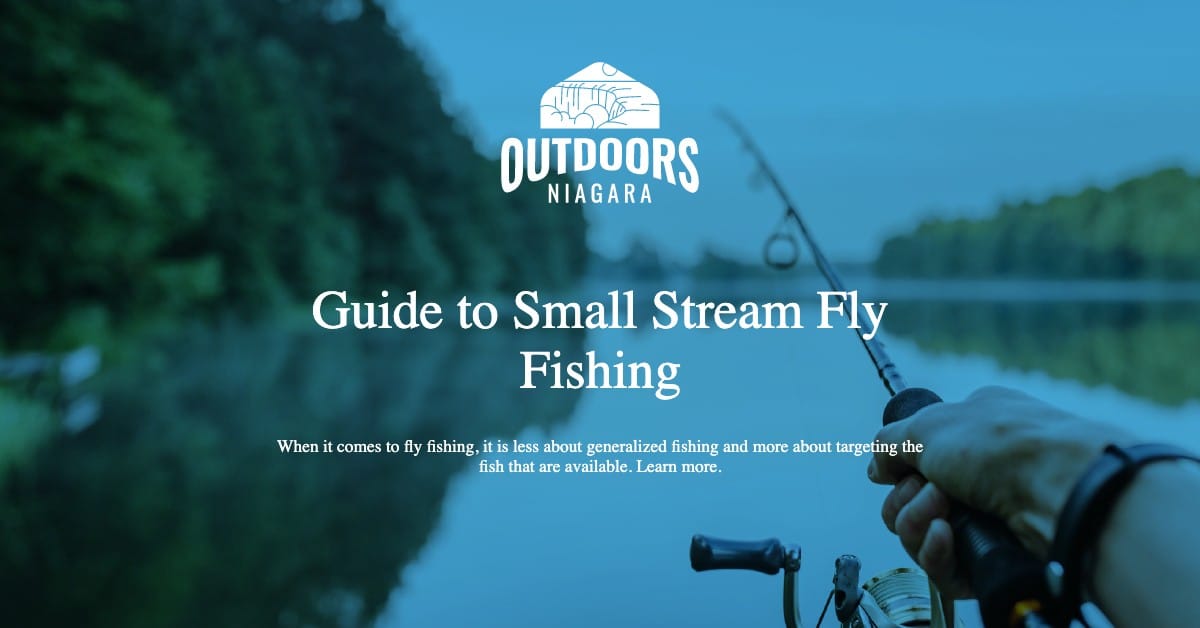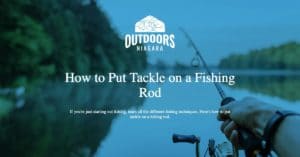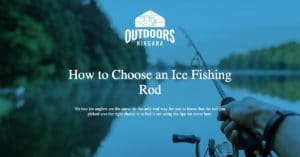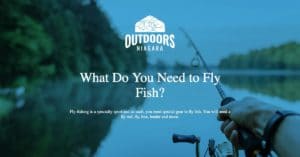Don’t be fooled by the phrase “small stream fly fishing.”
You can catch very large fish in small streams, especially if you are fishing in a stream where salmon run.
When it comes to fly fishing, it is less about generalized fishing and more about specifically targeting the fish that are available.
For that reason, you will show up with a fly rod set up to target a few species of fish, rather than fishing for whatever is there.
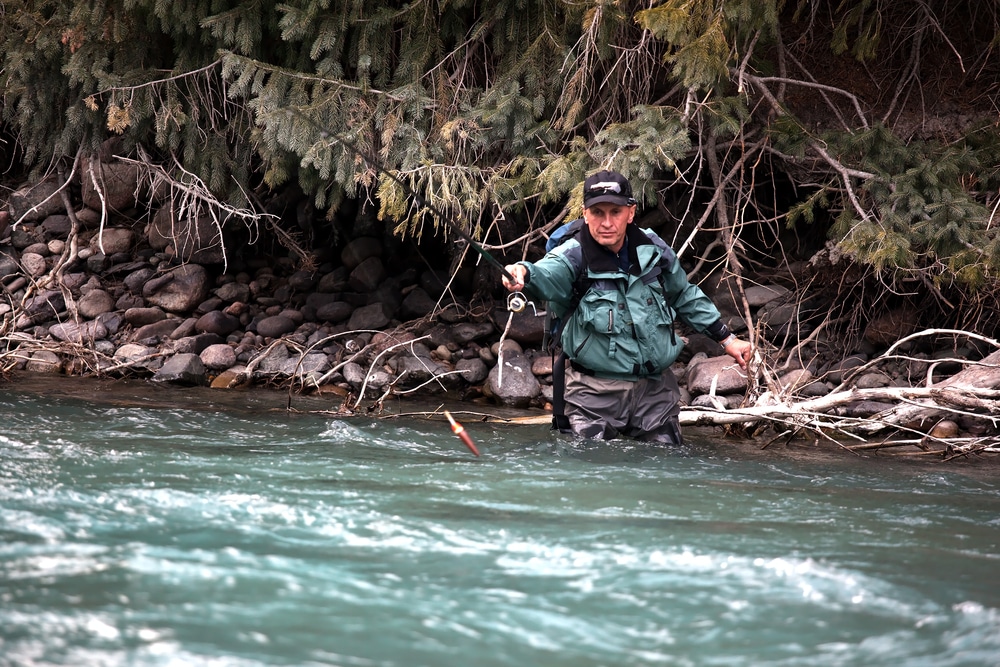
Contents
Fly Selection for Small Stream Fly Fishing
When you head out to go fly fishing, you want to think about what you are going to target – the fish that are available in that stream.
Fish will vary by location, so it is important to know what you are facing and prepare a selection of flies for your fishing adventure.
Flies, which are mimics of insects and other organisms, may also have seasons where they are more effective.
That is because as the season progresses – spring into summer, summer into fall, fall into winter – the available food supply on a stream also changes.
We refer to this as The Hatch. Insects generally have a very short lifespan and in the course of a few days, their adult lifecycle may begin and end.
Fish, tend to understand that cycles can be impacted by water temperature, weather, etc.
To successfully fly fish you need to understand The Hatch.
When you choose flies for small streams or even large rivers, you do so based on the availability of The Hatch.
This is the basic menu that the fish are dialed into.
To make this more difficult, you also have to understand the various stages of life for insects.
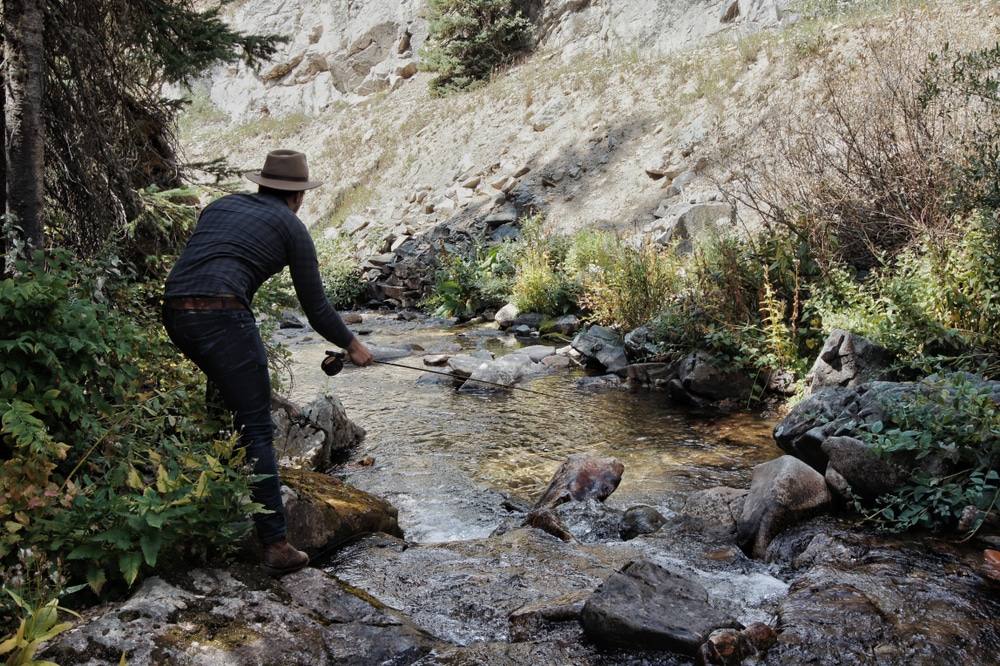
Water insects, which include large numbers of flies have different stages in their life cycle.
Those include:
- Egg – generally not important for fly fishing
- Larva, nymph, or Naiad – Many flies are mimics of larvae, naiads, and nymphs
- Pupa – Not overly important to fly fishing
- Adult – Many adult insects also are important to fly fishing
It sounds extremely complex and can be. In the old days, you pretty much had to have someone who was willing to show you what all of this meant.
You are essentially monitoring the above-water insects – adults – and the below-water aquatic insects, dragonfly naiads, mosquito larvae, midge larvae, etc.
From that knowledge, you can pull together a selection of flies that will be more successful if you toss them during the right window of time on any body of water.
We all this – Matching The Hatch – and that is a critical aspect of fly fishing.
Thankfully, there is a ton of information out there available to fly fishers who want to learn to improve their ability to toss flies successfully.
Species Specific Fly Fishing
When you head out to fly fish, you target a species of fish – Trout, bass, salmon, pike, etc.
How you set up your rod is going to depend on what species of fish you target.
Sometimes, you set up for a group of fish, top water fish, fish that hunt by sight, etc.
Bass and trout often eat the same thing, but a salmon might not be interested in what either bass or trout are hunting.
In the case of salmon fishing, it is more behavioral than visual. For bass and trout, food selection is often visual.
If you check with your local fish and game government website, you will often find that they have painstakingly provided a bunch of cool information about the fish you will find in local streams, and many times, they will tell you about their feeding habits.
A good example of this is from the Alaska Department of Fish and Game, which provides run-time information by species of fish.
Here’s a link to check out the information for the Kenai River.
Because Alaska is a huge territory and so many people travel there to fish, the ADFG has a lot of information to help people fish safely, and more successfully.
Many Fish and Game Departments will have similar information, especially for lakes and streams.
What is a good small stream fly fishing setup?
Fly rods are categorized by the weight of the fly they will handle.
A fly rod setup does not include a sinker so the weight of the fly is critically important.
Each fly rod will list the flyweight in a range so that you know the types of flies you can choose for that rod.
If the fly is too large, the casting becomes difficult. If the fly is too small, the line will not go very far when you cast.
For small streams and smaller fish – a 2-4 weight fly rod will do just fine.
These can generally handle trout that are less than a foot in length – Brook Trout, Cutthroat trout, smaller bluegill, perch, etc.
Go for rod lengths between 7′ 6″ – 8′ 6″ – these will be strong enough to handle smaller fish and still give you accuracy for casting.
A 3-weight fly rod is a good average. There is an art to fly fishing for brook trout and cutthroat trout.
Bigger Fish in Small Streams
Walk through the backwoods and up the slopes where a small stream may hide deep holes.
There you can often find big Brown Trout and Rainbow Trout.
For bigger fish in small streams, you want to aim for a 5-weight fly rod.
This is perhaps the most common weight for fly rods, and it offers a lot of options for targeting most freshwater fish.
It will handle smaller bass, even largemouth bass, and bigger trout, including brown and rainbow trout.
You want a longer pole for bigger fish so opt for the 8′ 6″ – 9′ 6″ rods.
Best Flies for Rainbow Trout?
- Wooly Bugger – this is a streamer pattern fly that mimics a few types of organisms. Mostly it is a larva mimic for butterflies, leeches, etc. These work well for most trout and even for bass. The plus of the Wooly Bugger is that it works well in clear water or stained water. It can also handle faster water current which might otherwise cause smaller flies to disappear. Fish the Wooly Bugger in calm water around holes or let it float down riffle zones to the runs beyond.
- The Orange Blob – which is an egg pattern fly. Its bright orange color mimics salmon roe and can be a fast-hitting fly for hungry trout. Best fished around active water or where the water is deeply stained. The bright color stands out in dark water, but will also handle clear or gin-stained waters.
- Olive Dun – A classic fly for trout, is a mimic of mayflies. This is an awesome selection for late spring and early summer. It will attract rainbow trout and even brown trout. Fish it at dawn or dusk in still water. That is where mayflies will naturally be. They dot the water as they deposit eggs and the trout go crazy for them.
Best Flies for Brook Trout
- Green Weenie – A classic mimic of green larvae such as inch worms, which are often in trees with overhanging water. This small and fuzzy straight-line fly is best fished in the shady spots where trees overhang still water or holes. Its bright green color makes it visible in clear and stained waters and brook trout love them.
- Parachute Flying Ant – Another classic fly for brook trout. The fuzzy black body has a burst of red or orange wings that mimic flying ants. It is a good bet for clear water, and you would fish it in calmer spots or along the shore.
- Prince Nymph – Is a wet fly for presentation below the surface. Nymphs are popular for brook trout and the Prince Nymph offers you a good option for neutral colors with a hint of color.
Braided Line for fly fishing
A braided line is the standard option for fly fishing.
Choose a green-colored braided line in a ten-pound test for most small stream applications.
You can go with mono or fluorocarbon, but since braid entered the market, most fly anglers choose the braided line with a mono or fluorocarbon leader.
Be sure to match the line weight to your fly rod.
The rod will indicate what the maximum line weight is for the rod.

